The phosphatidylserine receptor TIM1 promotes infection of enveloped hepatitis E virus
- PMID: 37833515
- PMCID: PMC11073319
- DOI: 10.1007/s00018-023-04977-4
The phosphatidylserine receptor TIM1 promotes infection of enveloped hepatitis E virus
Abstract
The hepatitis E virus (HEV) is an underestimated RNA virus of which the viral life cycle and pathogenicity remain partially understood and for which specific antivirals are lacking. The virus exists in two forms: nonenveloped HEV that is shed in feces and transmits between hosts; and membrane-associated, quasi-enveloped HEV that circulates in the blood. It is suggested that both forms employ different mechanisms for cellular entry and internalization but little is known about the exact mechanisms. Interestingly, the membrane of enveloped HEV is enriched with phosphatidylserine, a natural ligand for the T-cell immunoglobulin and mucin domain-containing protein 1 (TIM1) during apoptosis and involved in 'apoptotic mimicry', a process by which viruses hijack the apoptosis pathway to promote infection. We here investigated the role of TIM1 in the entry process of HEV. We determined that HEV infection with particles derived from culture supernatant, which are cloaked by host-derived membranes (eHEV), was significantly impaired after knockout of TIM1, whereas infection with intracellular HEV particles (iHEV) was unaffected. eHEV infection was restored upon TIM1 expression; and enhanced after ectopic TIM1 expression. The significance of TIM1 during entry was further confirmed by viral binding assay, and point mutations of the PS-binding pocket diminished eHEV infection. In addition, Annexin V, a PS-binding molecule also significantly reduced infection. Taken together, our findings support a role for TIM1 in eHEV-mediated cell entry, facilitated by the PS present on the viral membrane, a strategy HEV may use to promote viral spread throughout the infected body.
Keywords: Apoptotic mimicry; Cell surface receptor; HAVCR1; Hepatitis E virus; T cell immunoglobulin and mucin domain-containing protein 1; Viral entry; Viral hepatitis; Virus-host interaction.
© 2023. The Author(s), under exclusive licence to Springer Nature Switzerland AG.
Conflict of interest statement
The authors declare no conflict of interest.
Figures
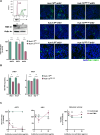
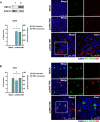


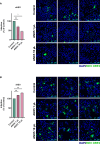
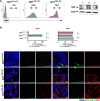
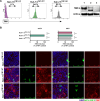
Similar articles
-
TIM1 (HAVCR1) Is Not Essential for Cellular Entry of Either Quasi-enveloped or Naked Hepatitis A Virions.mBio. 2017 Sep 5;8(5):e00969-17. doi: 10.1128/mBio.00969-17. mBio. 2017. PMID: 28874468 Free PMC article.
-
Distinct Entry Mechanisms for Nonenveloped and Quasi-Enveloped Hepatitis E Viruses.J Virol. 2016 Mar 28;90(8):4232-4242. doi: 10.1128/JVI.02804-15. Print 2016 Apr. J Virol. 2016. PMID: 26865708 Free PMC article.
-
Virion-associated phosphatidylethanolamine promotes TIM1-mediated infection by Ebola, dengue, and West Nile viruses.Proc Natl Acad Sci U S A. 2015 Nov 24;112(47):14682-7. doi: 10.1073/pnas.1508095112. Epub 2015 Nov 2. Proc Natl Acad Sci U S A. 2015. PMID: 26575624 Free PMC article.
-
Life cycle and morphogenesis of the hepatitis E virus.Emerg Microbes Infect. 2018 Nov 29;7(1):196. doi: 10.1038/s41426-018-0198-7. Emerg Microbes Infect. 2018. PMID: 30498191 Free PMC article. Review.
-
Hepatitis E Virus: What More Do We Need to Know?Medicina (Kaunas). 2024 Jun 18;60(6):998. doi: 10.3390/medicina60060998. Medicina (Kaunas). 2024. PMID: 38929615 Free PMC article. Review.
Cited by
-
Hijacking host extracellular vesicle machinery by hepatotropic viruses: current understandings and future prospects.J Biomed Sci. 2024 Oct 5;31(1):97. doi: 10.1186/s12929-024-01063-0. J Biomed Sci. 2024. PMID: 39369194 Free PMC article. Review.
-
Targeting cellular cathepsins inhibits hepatitis E virus entry.Hepatology. 2024 Nov 1;80(5):1239-1251. doi: 10.1097/HEP.0000000000000912. Epub 2024 May 10. Hepatology. 2024. PMID: 38728662 Free PMC article.
-
Virus-Host Protein Interaction Network of the Hepatitis E Virus ORF2-4 by Mammalian Two-Hybrid Assays.Viruses. 2023 Dec 12;15(12):2412. doi: 10.3390/v15122412. Viruses. 2023. PMID: 38140653 Free PMC article.
References
MeSH terms
Substances
Grants and funding
LinkOut - more resources
Full Text Sources
Research Materials

